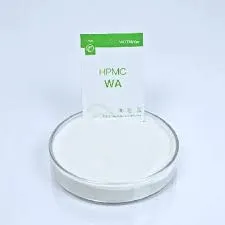
8월 . 14, 2024 04:00 Back to list
Exploring the Applications and Benefits of Methyl Hydroxyethyl Cellulose in Various Industries
Exploring Methyl Hydroxyethyl Cellulose A Versatile Polymer
Methyl hydroxyethyl cellulose (MHEC) is a non-ionic, water-soluble polymer derived from cellulose, the most abundant organic polymer on Earth. It is a modified form of hydroxyethyl cellulose (HEC) that has been further chemically modified to include methyl groups. This alteration significantly enhances its properties and applications across various industries, including construction, pharmaceuticals, cosmetics, and food production. As we delve into the characteristics and applications of MHEC, it becomes evident why this compound has gained prominence in multifaceted sectors.
Chemical Structure and Properties
MHEC is characterized by its unique chemical structure, which enables it to dissolve easily in water, forming a stable, viscous solution. The degree of substitution, which denotes the number of hydroxyl groups substituted by methyl and hydroxyethyl groups, plays a crucial role in determining its solubility and viscosity. MHEC can be tailored to meet specific requirements, making it an indispensable ingredient in formulations that require thickening, binding, or emulsification.
One of the most notable properties of MHEC is its ability to retain water, which is essential for maintaining moisture in various applications. This water-retaining capability not only enhances the performance of products but also extends their shelf life. Additionally, MHEC exhibits excellent film-forming abilities, providing a protective barrier that can improve the stability of various formulations.
Applications Across Industries
methylhydroxyethyl cellulose

1. Construction In the construction industry, MHEC is commonly used as a thickening agent in cement-based products, such as tile adhesives, grouts, and repair mortars. Its water retention properties enhance workability and allow for better adhesion of materials. MHEC also helps in reducing the risk of cracking during the curing process, thus improving the overall durability of the structure.
2. Pharmaceuticals MHEC serves as a critical component in pharmaceutical formulations, particularly in the production of controlled-release tablets and gels. Its film-forming and binder properties enable the formulation of dosage forms that release active ingredients gradually, thereby improving therapeutic efficacy. Additionally, MHEC is utilized as an excipient in various drug formulations, ensuring consistency and effectiveness.
3. Cosmetics The cosmetic industry benefits from MHEC's ability to provide a smooth texture and improve product stability. It is commonly used in lotions, creams, and shampoos as a thickener and emulsifier, ensuring the even distribution of ingredients. Its non-ionic nature is particularly advantageous, as it minimizes the risk of irritation and allergic reactions, making it suitable for sensitive skin formulations.
4. Food Production MHEC is approved for use in food products as a thickening and stabilizing agent. It helps improve the texture of sauces, dressings, and dairy products by enhancing viscosity and preventing separation. Its ability to retain moisture also makes it a popular ingredient in baked goods, ensuring freshness and improving mouthfeel.
Conclusion
In conclusion, methyl hydroxyethyl cellulose is a versatile polymer with a wide array of applications across multiple industries. Its unique properties, including water retention, thickening, and film-forming abilities, make it an essential ingredient in construction materials, pharmaceutical formulations, cosmetic products, and food items. As industries continue to evolve and demand more efficient and effective materials, MHEC stands out as a crucial component that meets diverse needs. With ongoing research and development, its applications are likely to expand further, reinforcing its significance in modern formulations.
-
Why HPMC is a Key Additive in Wall Putty Formulations
NewsAug.05,2025
-
Redispersible Powder in Decorative Renders: Function Meets Finish
NewsAug.05,2025
-
Redispersible Powder for Interior Wall Putty: Smooth Results Every Time
NewsAug.05,2025
-
HPMC’s Water Retention Capacity in Dry Mortar Applications
NewsAug.05,2025
-
HPMC Factory Contributions to Liquid Detergents
NewsAug.05,2025
-
How HPMC Factory Products Change Detergent Textures
NewsAug.05,2025







